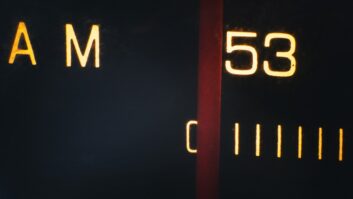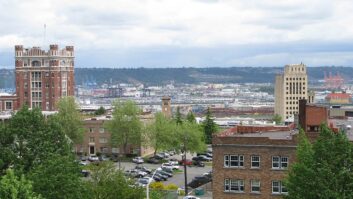The FCC has granted a request by the group Engineers for the Integrity of Broadcast Auxiliary Services Spectrum for a Declaratory Ruling regarding prior coordination notices for most minor-change fixed-link aural and TV BAS applications.
EIBASS Co-Chair Dane Ericksen told Radio World the ruling affects both radio and television stations; it pertains to Aural Broadcast Auxiliary Services fixed-link stations, both 950 MHz and 18 GHz.
Although EIBASS believed that it’s generally understood by BAS licensees that applications for new stations and major-change modifications to existing stations required a prior coordination notice, the EIBASS request to the FCC explained there has been some confusion about this point.
The engineers’ group said in its announcement this week that some BAS licensees assume minor-change BAS fixed-link modifications don’t require a PCN. The EIBASS request outlined a key reason for such a misunderstanding. Unlike a major-change application or an application for a new link, a minor-change application does not have to attach a copy of a successfully completed PCN as an exhibit to the application. However, EIBASS pointed out, the applicant is still required to have successfully completed the PCN process.
EIBASS argued that the FCC could request the applicant to provide a copy of the PCN if it wished. The most notable exemption EIBASS contended was for fixed-link stations in the 2 GHz TV BAS band that have their own special “positive option” frequency coordination requirement.
EIBASS Co-Chair Dane Ericksen noted that changes in a transmit or receive site’s coordinates of up to ±5 seconds in both latitude and longitude are allowed as minor-change modifications, but that such a shift in a transmitting dish location could sufficiently alter the relative geometry to a nearby antenna to cause interference where previously none existed.
Even a minor change reduction in antenna height could raise interference issues at a multi-station site. Closely spaced TSL or ICR transmit dishes and STL or ICR receive dishes can coexist on a tower if engineers calculate sufficient vertical separation between the antennas. In such cases, an antenna height change by any party on a shared tower could result in interference.
The FCC stated in its decision (PDF) that although evidence of frequency coordination is not required when submitting an application for a minor mod, prior coordination must be completed before implementing most minor mods to fixed microwave link Part 74 BAS stations.
Related:
“New BAS Group Aims High” (March 2010)










